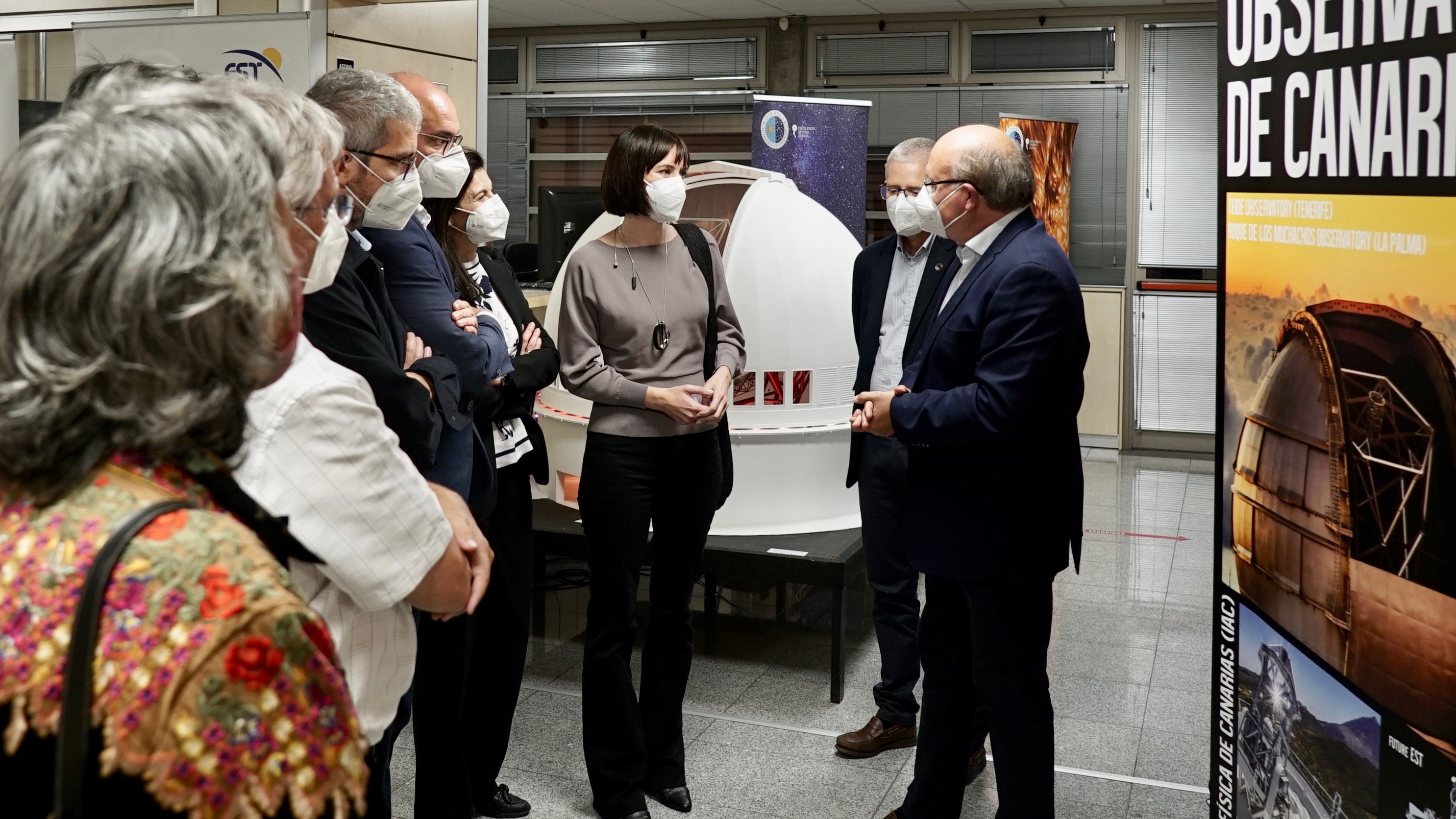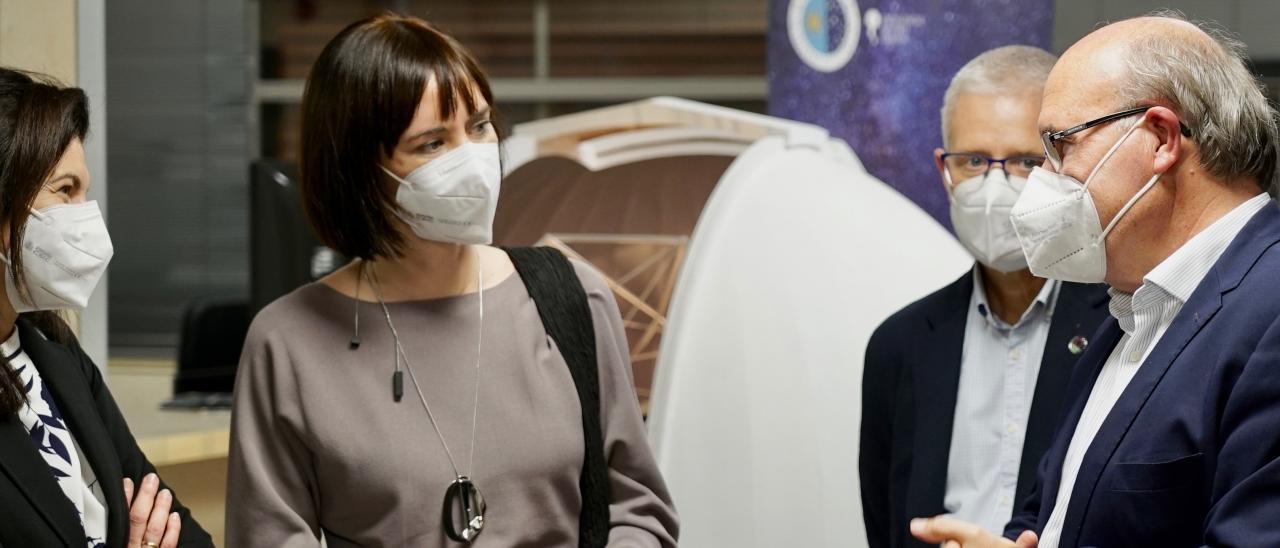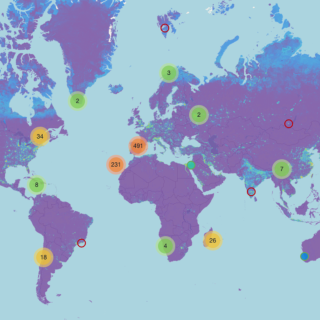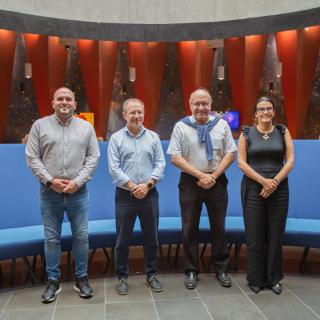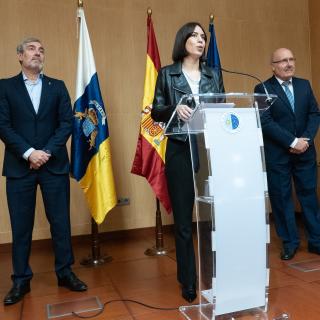Spanish Minister of Science and Innovation, Diana Morant, visited last Wednesday the Centre for Astrophysics’ facilities in La Palma (CALP) to know the impact of the volcanic eruption on the personnel and on the operation of the facilities at the Roque de los Muchachos Observatory (Garafía, La Palma).
During her visit, she held a meeting with IAC Director Rafael Rebolo, which was also attended by the Director of the Gran Telescopio Canarias (GTC), Romano Corradi, and the ORM Site Manager, Juan Carlos Pérez Arencibia. Accompanying the Minister were the General Secretary of Research, Raquel Yotti, the Government Delegate in the Canary Islands, Anselmo Pestana, and the Director of the ACIISI, Carlos Navarro.
In the meeting, Rafael Rebolo informed the Minister and the other authorities that, to date, there had been no damage to the ORM facilities, although there are telescope personnel who, either themselves or their families, have lost property. Minister Morant and all the attendees expressed their solidarity, especially with these people and with all those who had to abandon their homes or suffered damages to their property.
The IAC Director also commented that, due to the presence of potentially abrasive volcanic ash in the air, all the international institutions present at the Observatory have taken protective measures and developed safety protocols to preserve the expensive optical, electronic, and mechanical systems of their telescopes. He pointed out that among the most damaged infrastructures are the Cherenkov telescopes, such as MAGIC and the LST-1 of the CTA network. As they have no dome and are directly exposed to volcanic ashfall, these facilities had to close down entirely and create additional protections for some components.
In the case of the GTC and the Isaac Newton Group (ING) telescopes, these institutions have decided to suspend observations but have continued to carry out maintenance and upgrades. On the other hand, the remaining telescopes continue to operate when conditions allow, which amounts to about half of their scheduled observing time. Rebolo explained that it has not yet been possible to assess in detail the impact on the facilities, especially on the most exposed ones, and that it will be evaluated once the eruption is over.
Finally, Minister Morant sent a message of support and calm to the international institutions that have been affected by the current volcanic crisis and assured that the Ministry of Science and Innovation would continue to support the Observatory and the installation of the new scientific infrastructures that the IAC is promoting on La Palma.
During the visit, the Minister was also able to take a close look at the LaPalma Supercomputer, one of the nodes that make up the Spanish Supercomputing Network (RES, by its Spanish initials). This computer installation was not damaged thanks to its advanced climate control, security, monitoring and protection features, which prevented ash from entering the ventilation system of the room where it is located.
